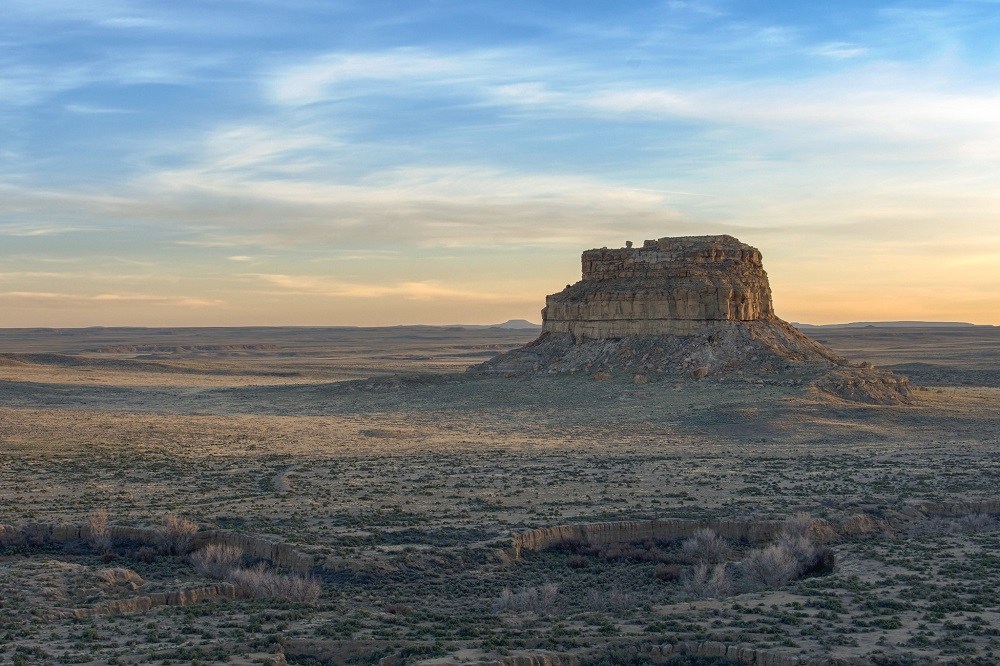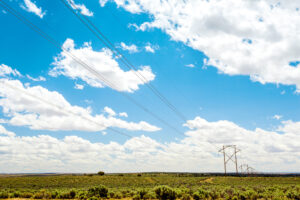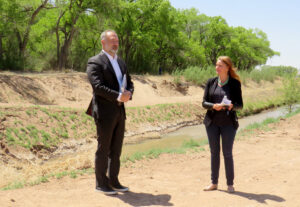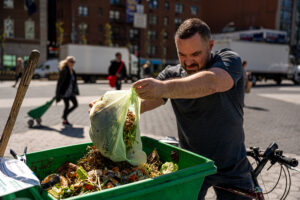BIA: Navajo members can ‘work around’ connectivity issues to participate in online forum on oil and gas development

Representatives from the U.S. Bureau of Indian Affairs (BIA) and the U.S. Bureau of Land Management (BLM) told participants of a virtual meeting Wednesday that they can “work around” connectivity issues to participate in information sessions about proposed amendments to the BLM’s Resource Management Plan for the Farmington field office.
The comments came after Navajo Nation Council Delegate Daniel Tso called for the BLM to “immediately and indefinitely suspend” the amendment process, in a letter that was read aloud by Mario Atencio during the online meeting. Tso represents the northwest New Mexico Navajo Chapters Baca/Prewitt, Casamero Lake, Counselor, Littlewater, Ojo Encino, Pueblo Pintado, Torreon and Whitehorse Lake.
“The Navajo Nation is still in the midst of an extreme public health emergency caused by the SARS-CoV-2 virus,” Tso’s letter stated, adding that for a period of time, the Navajo Nation was experiencing an infection rate that was “among the highest in the world per capita.”
“The expectation for the Navajo Nation to engage in ‘meaningful consultation’ regarding the amendment of a resource management plan while the Navajo Nation has been singularly focused on fighting the SARS-CoV-2 global pandemic is extremely burdensome to the Navajo Nation,” the letter stated.
The BLM’s draft Resource Management Plan Amendment (RMPA) was initially released in late February about a week before New Mexico recorded its first cases of COVID-19. The 400-plus page draft amendment outlines a preferred alternative that would increase oil and gas activity in the Greater Chaco region.
Tribal governments, environmental groups and members of the state’s Congressional delegation all subsequently called for the U.S. Department of the Interior to extend or halt the process until after the pandemic.
BLM decided in early May to extend the deadline for submitting public comments by 120 days.That period ends September 25. But all of the public outreach and information sessions have since been conducted online.
Sixty percent of Navajo Nation residents currently lack access to broadband, according to Navajo Nation President Jonathan Nez. In areas where broadband is available, infrastructure is deployed by a “patchwork of service providers that results in sporadic to non-existent connectivity,” Nez said during a House Energy & Commerce Committee hearing in July.
“The Navajo Nation persistently falls on the wrong side of the digital divide,” Nez said. “Indeed, it would be more accurate to say the Navajo Nation is at the bottom of a digital chasm.”
Atencio, Tso and others criticized the use of virtual public meetings to engage with a community that lacks access to broadband and cell service.
“The use of virtual meetings does not constitute meaningful consultation. It would be reasonable to expect that meaningful consultation should require significant time to have in-person, multimedia supported, extended dialogue with BLM [Farmington Field Office] regarding certain sections that involve the Navajo Nation and its local chapters,” Tso’s letter stated.
Tso and others in the Navajo Nation’s Far East communities alerted BLM in April to the fact that a virtual forum would not afford much public participation from communities that do not have access to reliable broadband.
“In the three months since that April letter, the Eastern Navajo have not realized a transformative telecommunication renaissance,” Tso said in his letter, which was addressed to the BLM’s New Mexico State Director Tom Spisak. “Taking into account the lack of reliable Internet access, the Bureau of Land Management should not expect any significant amount of Eastern Navajo public participation in the Bureau of Land Management’s virtual public meetings.”
Al Elser, BLM’s Farmington District Manager, said Spisak was “not able to respond” to those concerns, despite the fact that Spisak was participating by phone in the session.
Elser added that the bureau’s online information sessions, including the session on Wednesday, are for members of public and elected officials to pose questions and receive answers about the RMPA.
“We really recognize that part of the NEPA process that’s very important to get that buy-in for a document like this [is] where we get the comments from the public,” Elser said, adding that the bureau is “taking this opportunity to reach out and have all of our specialists available to answer questions and help explain this document.”
Elser also said the 120-day extension is “probably all we’re going to get at this point.”
“I think the entire world is figuring out ways to move forward during this pandemic,” Elser said. “It’s challenging, to say the least, and more challenging for certain communities than others.”
“That’s unacceptable,” Atencio responded. “None of this is meaningful. How does the BLM and BIA define meaningful consultation? How does environmental justice play into all of this?”
Bart Stevens, Regional Director of the Navajo Regional Office at the BIA, said the timeline for the process was set by the Department of Interior.
“We’re just accommodating those timelines,” he said.
Stevens later acknowledged the lack of broadband access in the communities most impacted by the proposed RMPA.
“I understand there’s connectivity issues. I also know there’s work-arounds to that,” Stevens said. “I oftentimes go outside my house, to the highest point on the lot I live on, to jump on calls. I can’t not participate because I have those challenges, I have to make every effort on my part to keep the work moving forward.”
Stevens added that tribal consultation is defined by statute as allowing a mechanism for communication to happen with all stakeholders, and “most importantly tribal leaders, government to government consultation” as well as “stakeholders in general, which is defined in Indian Affairs policy.”
“This is going to be the new normal, more than likely,” Stevens said. “Will we ever get back to face-to-face meetings? No one can answer that question.”
He added that infrastructure development, including broadband, is currently underway in different parts of the Navajo Nation in Arizona and elsewhere, though none of those projects would help communities in northwest New Mexico access broadband in order to participate in the online forums being held for this RMPA before September 25.
“The new normal is to force tribes to engage while a global pandemic is happening. It still doesn’t fulfill the original need and intent behind extending the public comment period,” Atencio said, noting that the pandemic has only gotten worse since April.
“This stuff is going way too fast. I guess this is the new normal, shafting Indians virtually, rather than in their face,” he said.
U.S. Senators Tom Udall and Martin Heinrich, along with U.S. Representatives Ben Ray Luján and Deb Haaland sent a letter Wednesday to Interior Secretary David Bernhardt, urging him to further extend the public comment period until after the pandemic.
The lawmakers said virtual public meetings offer a “hollow promise of meaningful public engagement,” pointing to lack of broadband on the Navajo Nation and the crippling public health emergency.
“The COVID-19 pandemic continues to radically alter the lives of New Mexicans, limiting their ability to fully participate in public processes fundamental to the economy and way of life in and around the BLM Farmington District in the Northwest corner of our state,” the letter stated. “Despite these concerns, several public processes proceed apace, hurtling forward to provide additional acreage for an oil and gas industry with seemingly little need for it, given the worst price and oversupply conditions in at least a decade. Accordingly, we ask you to indefinitely pause onsite inspections for applications for permit to drill (APDs) and the larger public process for the RMPA until this deadly virus can be contained.”
The article was published at BIA: Navajo members can ‘work around’ connectivity issues to participate in online forum on oil and gas development







